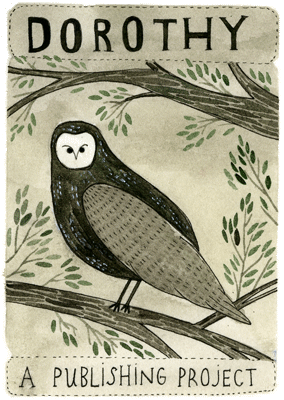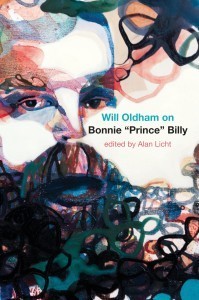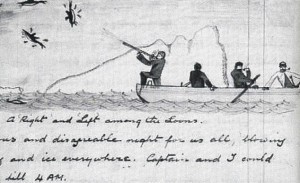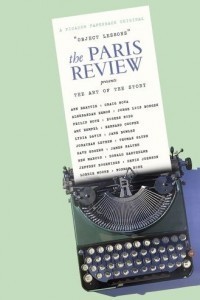The Paris Review's Blog, page 885
September 24, 2012
Will Oldham on Bonnie “Prince” Billy
Will Oldham has been singing and composing for twenty-five years. In a new book, he discusses his highly individualistic approach to music making and the music industry (under the name Bonnie “Prince” Billy), one that cherishes intimacy, community, mystery, and spontaneity.
Do you think a song is ever really finished?
I feel like a song is completed when the writing is done and I present it to a friend, partner, or group of musicians. Then it’s completed when we record together and finish mixing. Then it’s completed each and every time someone listens. I think that a song, for the most part, is completed by the listening experience. It enters into people’s brains and mutates and then might get completed again—in their dreams, in mix tapes that they make, or in new listening experiences that they have. So it isn’t ever finished because there’s never going to be a definitive listening experience. I guess the idea is that I listen to certain favorite songs over and over because for some reason I just haven’t finished listening to them. But in terms of concentrating on the bones of the song, that ends with the recording; in rare cases there will be arrangement modifications, but from that point on the skeleton is always going to stay the same. From then on, playing live, for me, is more like an exercise to stay in shape for writing and recording.
There’s the way a song can sound when you’re just playing it in a room to somebody that’s going to perform it with you, and then the way it sounds in the rehearsal room when you’re playing it with a band, and then there’s the way it sounds when you go into a studio and the engineer is listening to it; there’s an evolution of the song’s identity from when it’s something that you’re creating on your own to where it ultimately ends up.
Yes. Anybody who’s a big music fan and plays music for people experiences this, but if you work with recorded music you can point to the differences in instrumentation or preparedness or arrangement. And you can play the same recording of the same song and have vastly different feelings about it. You could be listening to a song in your car and not enjoying it, and then someone could get in the car and all of a sudden the song becomes good, or the reverse. It seems to me that the ears that are listening make more difference than the way the music sounds. ‘Cause you can also tell when you see people who are absolutely 100 percent enthralled and enjoying inarguably terrible music, and they’re smart human beings; you see it happening and you realize it doesn’t have anything, or far less, to do with the music itself than the listening done by the listener and the situation.
Press Pass: Dorothy
 In 2010, Danielle Dutton founded Dorothy, a publishing project, with the aim of producing books that appeal both to fiction readers and to poetry fans. Her own writing—she is the author of two novels,
Attempts at a Life
and
S P R A W L
—likewise embraces the slipperiness of not quite being one or the other. The covers she designed for Dalkey Archive, meanwhile, were often as minimal and tonal as the writing within. Who better, then, to shepherd formally unconventional, handsomely made little books into being? On the occasion of her third year of books—she produces a pair each year—I spoke with Dutton by phone about her one-woman operation.
In 2010, Danielle Dutton founded Dorothy, a publishing project, with the aim of producing books that appeal both to fiction readers and to poetry fans. Her own writing—she is the author of two novels,
Attempts at a Life
and
S P R A W L
—likewise embraces the slipperiness of not quite being one or the other. The covers she designed for Dalkey Archive, meanwhile, were often as minimal and tonal as the writing within. Who better, then, to shepherd formally unconventional, handsomely made little books into being? On the occasion of her third year of books—she produces a pair each year—I spoke with Dutton by phone about her one-woman operation.
How would you describe the aesthetic of the press?
Part of the idea of starting the press was that I felt that I was in two different camps. In working at Dalkey, I felt tapped into American literary fiction and translation. At the same time, my own writing was more small press, experimental, and I felt that, much of the time, there is little crossover between those two communities. The idea, then, was to publish two books each year that are aesthetically different, in order to try to develop a crossover readership.
The fiction community that my own writing was coming out of at the beginning was really loose and close to poetry, and it seemed like that there was no cross-reading going on. So I published Renee Gladman, who started as a poet. The other book I published that first year was a novel by Barbara Comyns that was out-of-print. I offered those two books together at a special discount to encourage people to buy both when they come looking for just one—to get Renee Gladman’s book into the hands of Barbara Comyns’s readers and vice versa. So the aesthetic is open, but it’s all work that is risking something, that is adventurous aesthetically or structurally.
Doyle’s Journals, Rowling’s House
Check out the journals young Arthur Conan Doyle kept as a ship’s surgeon.
“I bought my wedding dress in disguise.” J.K. Rowling on the perils of fame.
Speaking of Ms. R, you can now buy her house, should you have a few million pounds handy.
The full trailer for Ang Lee’s highly anticipated Life of Pi adaptation is here.
Of late, “bloggers and booksellers have converged on the idea of telling people what they should read.”
September 21, 2012
Life-Affirming Reads
Dear Paris Review,
I am currently suffering from a major depression, which has caused me to lose my job and my relationship. I see a therapist and a psychiatrist, and I believe and hope I’m beginning to recover. I have been a major reader all my life, but the depression has made it difficult for me to concentrate, so I haven’t been able to read much lately. I’ve been reading bits and pieces of books I’ve read before many times (Darkness Visible, Diving Into the Wreck), trying to get something from them.
I suppose I’m looking for two different types of book as I recover: books that will show me why to live and how, and books that will allow me to escape my present torture. Both need to be pretty easy to follow—for instance, I recently bought The Myth of Sisyphus after reading William Styron’s reference too it, but it’s too difficult for my slow brain right now.
Thank you.
Dear friend,
I’ve been where you are and know exactly the state you describe: one of the many distressing aspects of depression is the inability to lose yourself—and for those of us who have always found comfort in books, this is particularly scary. It goes without saying that everyone’s recovery process is different, and without a sense of your exact tastes—although it is clear you are an ambitious and curious reader with wide-ranging interests—it is a little tricky to suggest comfort reads. (After all, that is so bound up with one’s history and associations, no?) But I can tell you what has worked for me, and for some people I know, and hope that the suggestions, and the knowledge that you are in good company, will prove helpful.
Read More »What We’re Loving: Sea Monsters, Children’s Books
I spent a recent vacation totally engrossed by Richard Ellis’s Monsters of the Sea. An accomplished marine artist and writer, Ellis examines the great sea monsters of history—from the sea serpent to the Kraken to the mermaid—and explains the sources of the myths (basking shark, giant squid, and manatee, respectively). The book is a combination of lore, history, and scientific inquiry, and a fun and accessible read. Plus, it introduced me to the Journal of Cryptozoology. —Sadie O. Stein
I tripped into a fit of digital nostalgia this week when I discovered Stylist’s compilation of opening lines from classic children’s books. There are even thumbnail covers, and the combination somehow makes the Paris Review office smell like the library I went to when I was a kid. To prevent sentimental overdose, I recommend a mix-and-match game: combine three opening lines and begin your own canonical text for youngsters. “In a hole in the ground it was too wet to play, if you really want to hear about it”; “Once upon a time, a little girl named Laura got the dog drunk on cherry brandy so she was sent to bed without eating anything.” And so on. —Samuel Fox
Object Lesson: Undermining
We can’t express how excited we are to show you Object Lessons: The Paris Review Presents the Art of the Short Story. To recap: the editors approached twenty contemporary masters, asked them to choose their favorite short stories from our extensive fiction archive, and then write an introduction explaining what makes said story so good. The result? Stories we already loved, stories we didn’t know we needed in our lives, and a veritable M.F.A. between two covers. (Publishers Weekly is actually the one who said that!) A must for the reader, the learner—for anyone!
Today’s quiz: Can you guess who wrote the following selection?
I had an odd figure for a modern dancer. Rubanesque, my composer boyfriend called my body when pressed for compliments. This was long before I found the tiny crimson panties tucked beneath his buckwheat pillow. I also heard him say Rembrandt. My mother, it’s worth noting, took figures very seriously. I often felt this was another feature of her generation, like the typing and the meals on trays. In my time, I believed, a body could be different and still be okay. But when the composer mentioned Botero, I lost confidence.
Find out! And pre-order a copy today!
Books for Readers, Nonreaders
A retired bibliophile in Manila has turned his home into a public library. He also runs a “book bike” to book-deprived areas. “As a book caretaker, you become a full man,” he says.
Remembering the late, legendary Knopf editor Ashbel Green.
Authors: consider working naked.
Books for nonreaders. (Not illiterates; those who don't enjoy books.)
From MoMA, the A to Z of alphabet books.
September 20, 2012
Never Fear! Your Mugs are Coming!
Friends! We are so excited about the enthusiasm with which you have greeted our super-duper new mug! (We can’t wait either.) But we wanted to warn you: due to a slight print delay, they’ll be shipping out a little later than we planned. We didn’t want you to worry and thought we’d tell you right away: you will get your mug in plenty of time for fall cider sipping!
They will arrive in early October, so sit tight!
Tonight: “Get in the back of the van!”
When BAM asked The Paris Review to choose a film for screening in concert with the Brooklyn Book Festival, the choice was obvious. So, tonight, please join Leanne Shapton, Lorin Stein, and yours truly for a special screening of the cult classic Withnail and I. To the uninitiated: the film, directed by Bruce Robinson, stars Paul McGann and Richard E. Grant as two wastrels in 1969 London who decide to take a restorative holiday in the Welsh countryside; obsessively quotable mayhem obviously ensues. Some find it baffling; some find it disturbing; for the rest of us, it is a magnificent obsession. All three camps are invited!
Starts at 7 P.M. Discussion to follow. Click here for tickets.
Dead Authors at Fashion Week: Part 3
Virginia Woolf attends the Burberry Prorsum Spring 2013 show.
I dread not the PR girls at the door this morning at Burberry Prorsum, though the invitation I possess is not mine. Sneaking in? Dressed as a fashion dude? I hardly consider dressing as a man to gain entry immoral; unlike me, half the so-and-sos present don’t even know what Prorsum means; O! Prorsum; Opossum. Those people invited who are supposedly “forward” thinking; people who discuss fashion though they’ve never worn Burberry; never felt the blue-black silk lining of a trench-coat sleeve; the plunge of putting on a sturdy work of satin and cotton sateen. I wanted to come in holding something. Flowers? Yes, flowers, since I do not trust my taste in Filson bags.
I take my seat and then, parading in from backstage quite composedly, the models are copper-rose clones; carrying swollen candy satchels; attractive and shiny hosts in a grand entryway; it is all perfectly correct. Some designers are to be seen as poets. Christopher Bailey; coming and going with a pin in hand; a pin and a vision; no country but England could have produced him. Happiness is this, I think. The lights come on and the end suddenly comes in a rush; the luster has gone out of it; no showgoer looks photoworthy like before; glimpsing the future, that hot pants are still in for spring, ruins everything. We rise instantly.
Then: “Virginia! Your menswear look is Uh-mazing! Your oxfords are so cute!”
Somehow I am recognized, in people’s eyes, in the swing and shuffle as we depart, it’s become known who I am. “Comme des Garcons,” I hear a lady with silver hair ornaments say, and now I confess a bit of shock overtakes me. Suddenly everywhere in the crowd I see women in blazers and fine gray-white trousers; ladies wearing collared shirts like spruce old men. Is that a tie? Awesome prorsum.
The Paris Review's Blog
- The Paris Review's profile
- 305 followers












